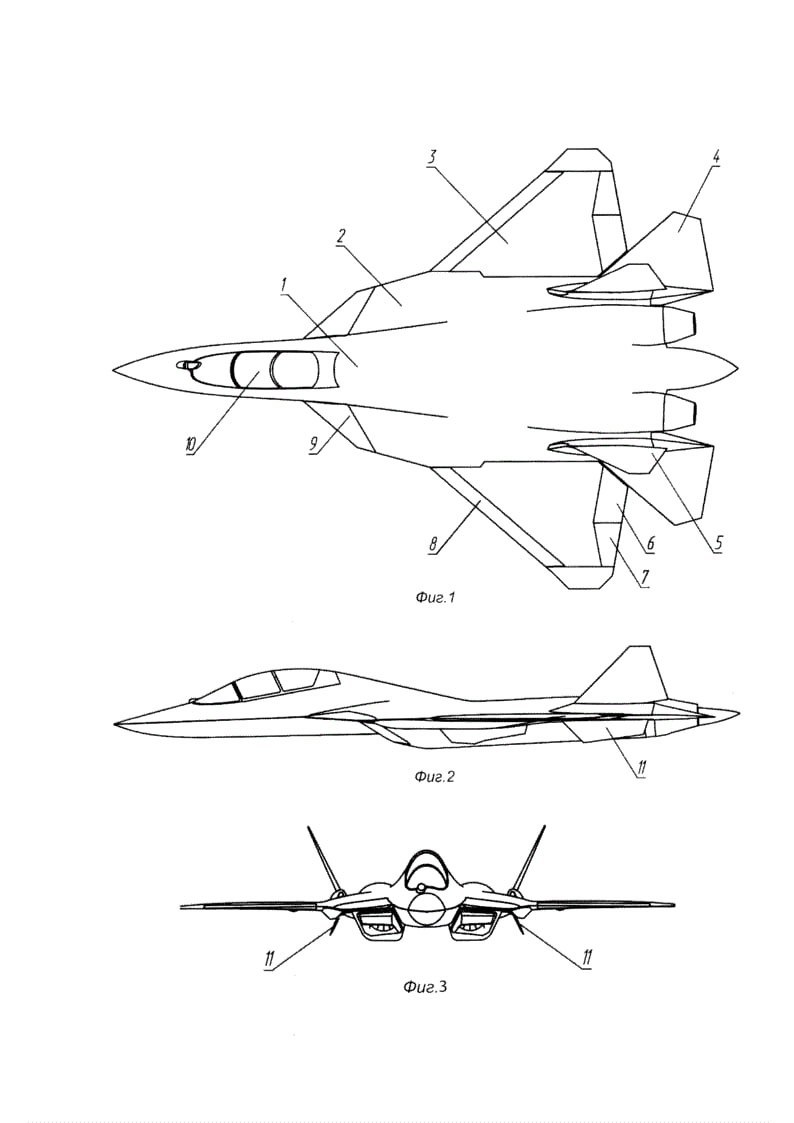According to documentation filed with Russia’s national patent body, the makers of the Su-57 stealth fighter and the Su-30 jets have envisioned a twin-seat stealth trainer.
The paperwork in the patent application with the Federal Service for Intellectual Property (FSIP) shows the trainer jet being mainly identical to the two aircraft with very few design differences.
The Su-57 has consistently reached new advancements, being operationally used in the June 2022 Suppression of Enemy Air Defense/Destruction of Enemy Air Defense (SEAD/DEAD) missions.
It has received Artificial Intelligence (AI)-enabled pilot-cockpit interface technology, sophisticated communications systems, and advancing integration with the S-70 Okhotnik Unmanned Combat Aerial Vehicle (UCAV) that should act as its wingman.
Suppose the United Aircraft Corporation (UAC) plan materializes, Russia will be the second country to have a dual-seat stealth jet after China, which also unveiled a twin-seat variant of the J-20.
However, while the new jet is strikingly similar to the Su-57, it is unknown if it is officially considered a variant of the original aircraft or an entirely new aircraft that might also see it being given a different designation. More clarity can be expected in the coming months as the Russian defense industry will shed more light on its future programs.
Networked Operations, Command & Control
According to the patent document available on the FSIP website, the patent was registered on November 17, six months after it was submitted on May 23. The patent holder has been identified as the Public Joint Stock Company (PJSC) United Aircraft Corporation (UAC).

A lot of emphasis is laid on an advanced communications system that aids the aircraft’s role both as an “airborne command post” for “network-oriented operations (of a) mixed group of aircraft” and “command different types of aircraft, both manned and unmanned.” This “air control point” role will also include “military formations.”
Without some elementary ISR capabilities, this expanded aerial command, control, and coordination function would be incomplete. Expecting the plane to possess electro-optical systems to observe enemy ground movements won’t be far-fetched. It would also be pertinent to note that such a role being envisaged for a multi-role aircraft is rare and is usually accorded to larger planes.
Encrypted Communications For Networking & Drone Control
The aircraft’s communications system allows communication using a wide range of communication types, operating in both open and encrypted modes.
It operates in:
- Centimeter wavelengths for transmitting photo and video images
- Short-wave wavelength range for sharing speech (voice) information over long distances
- Ultra-short wave range of wavelengths for sharing speech (voice) and tele-code information in the “board-to-board” mode
- Using a group action terminal – for group transmission of voice and tele-code information between subscribers of a group of aircraft;
- Using satellite space communications – for transmitting voice and tele-code information via satellites.
This ensures “flexibility in combat use when solving the tasks of an air command post in any weather conditions and when the enemy is jamming.”
This orientation towards networked operation is consistent with how the Su-57’s first operational use in the Special Military Operation (SMO) was described in state media.
A June 9 RIA Novosti report said four Su-57s were used in the ongoing Special Military Operation (SMO) in Ukraine in what appeared to be a Suppression of Enemy Air Defense (SEAD) operation.
The quartet was “linked to a single information network to destroy air defense systems through automatic communication systems, data transmission, navigation and identification in real-time. The low radar visibility of the Su-57 was also confirmed,” the article said.
Design Similar To Su-30 Or Su-57?
The description of the design throughout the long and technical patent document notes how it also matches the design features of the Su-57. Chief among this is the fused wing-body characteristic, where the upper fuselage and the wing roots seamlessly merge, with no discernible separation. Even the Su-30 airframe is characterized by this feature when the plane is seen from the top.
“The aircraft is characterized by the fact that the wing consoles are smoothly coupled with the fuselage,” the document said. This gives rise to the possibility that the Sukhoi Design Bureau (SDB) does not have the Su-57 in mind and that the new aircraft is an entirely different plane that only borrows some aspects. Neither does the document mention the Su-57 anywhere.
Reports from Russia claim it is the Su-30. A report on TASS said, “The aircraft closest to the invention is the Su-30MK family of aircraft, with which it will have several common features and, accordingly, characteristics.”
Other descriptions imply internal weapons bays, like the Su-57, F-22, F-35, and J-20. These are in the centerline underbelly between the engine intakes.
“The use of various aircraft weapons in a stealthy configuration, as well as unmanned aerial vehicles, inserted fuel tanks and other replaceable target modules from the cargo compartment of a two-seat multifunctional aircraft, is achieved due to the design of the cargo compartment (two cargo compartments are located one after the other along the plane of symmetry of the aircraft between the engine nacelles airframe,” said the document.
In this context, the mention of “unmanned aerial vehicles” can only be taken as the internal bays and their launch bays releasing the drones. These can have a series of functions for SEAD/DEAD missions, like electronic intelligence (ELINT) or decoys to draw enemy Air Defense fire. However, this is only a conjecture based on the description and language in the patent paperwork.
- The author can be reached at satamp@gmail.com
- Follow EurAsian Times on Google News